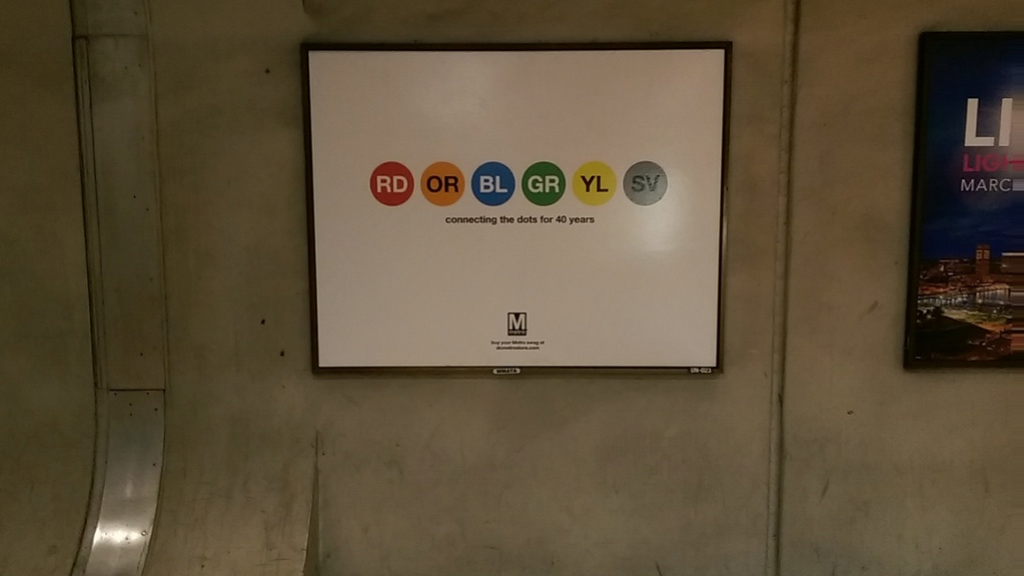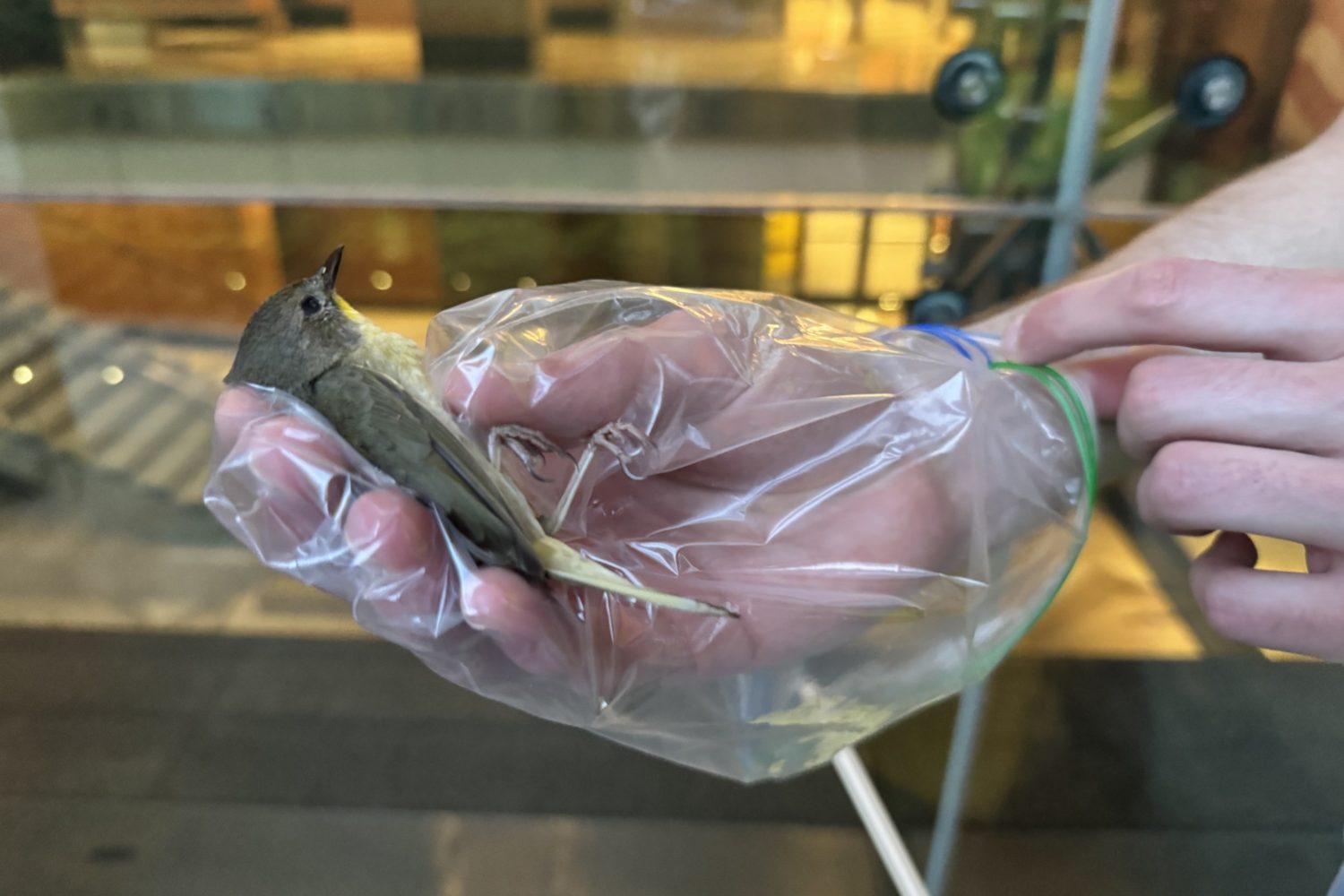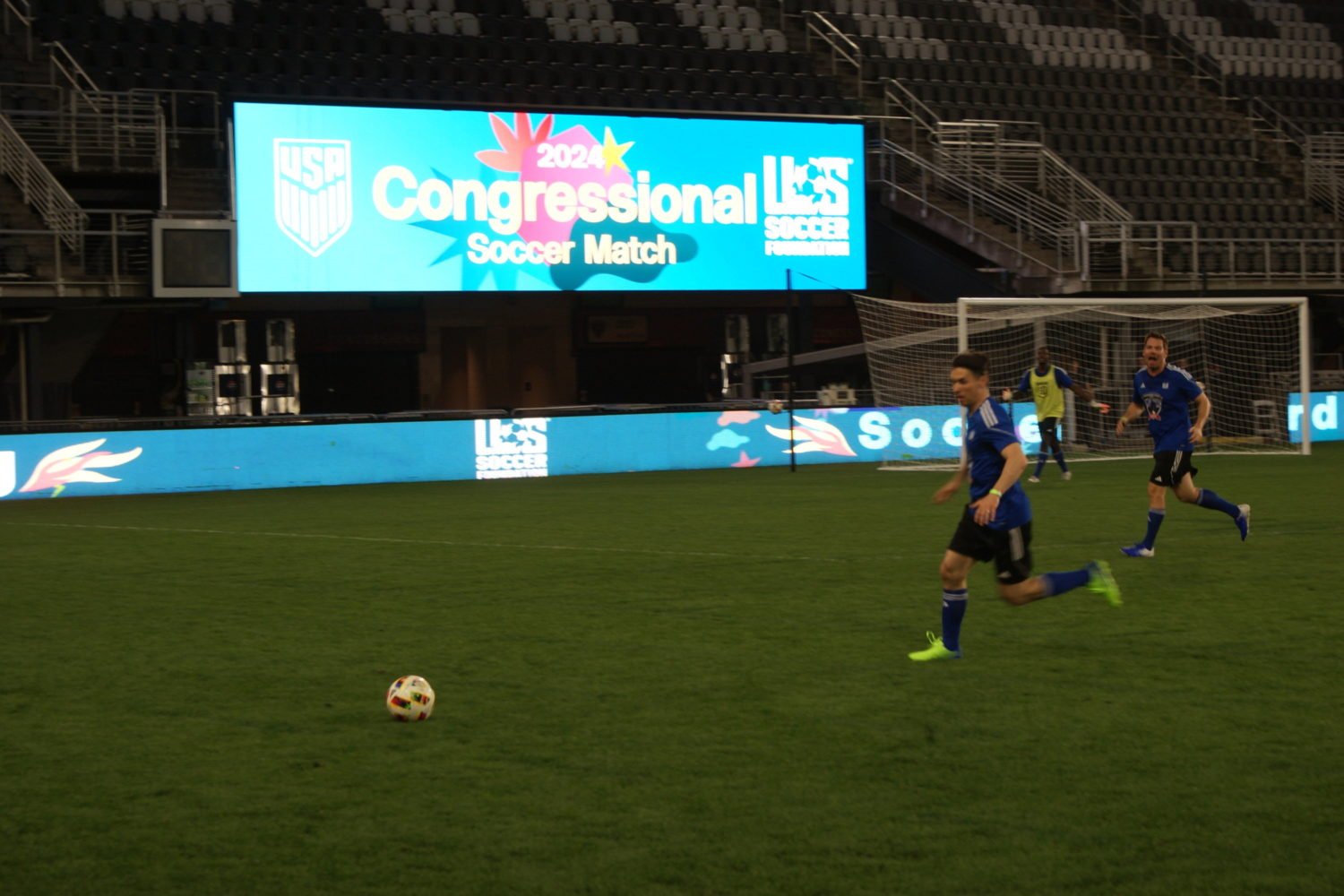Much like most humans on their 40th birthday, Metro’s big four-oh has the rail system celebrating on the outside but on the inside, reeling.
The problems Metro faces as it enters its fifth decade of service place it somewhere on the Martin Shkreli side of the public favorability scale. Almost every station has seen a drop in ridership since 2011, no surprise when you read the furious tweets from riders every day. The entire system needed to be shut down for a day for emergency repairs last month, prompting irate editorials and government ineptitude lectures from at least one former presidential candidate. A whole line might be shut down for months for repairs. Or maybe not. Either way, it’s a worrisome state of affairs.
So no one would fault you for being enraged when WMATA decides to launch a 40th-anniversary PR campaign—complete with themed tchotchkes and coupons—that only underscores the age-related failures it faces. At the same time, they’ve launched a new Metro-themed TV show touting the system’s convenience. To the average rider—delayed, harried, and probably offloaded by the deteriorating system—it might seem downright tone-deaf.
But you’d be wrong.
You might have lately seen a spate of advertising fêting the 40th anniversary of Metro, which began service with a five-station Red Line on March 27, 1976. There are the minimalist posters of the circular line logos declaring “Connecting the dots for 40 years;” anniversary-branded SmarTrip cards and card holders; a McDonald’s-sponsored giveaway of $10,000 worth of fares; “40th Anniversary Shopping Guide” pamphlets touting discounts to Bojangles’, Six Flags, and more.
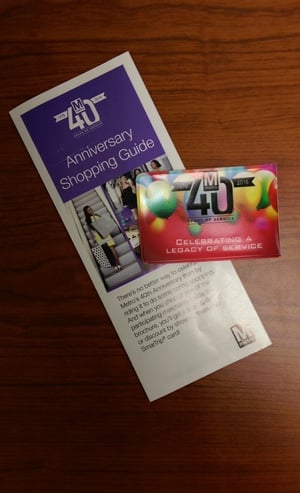
One can certainly make fun of Metro’s celebratory recognition of its age when that’s the main factor in its continued decline, like an aging baseball pitcher blowing out the candles to applause yet fully aware he’s one step closer to an enfeebled retirement. That sentiment was most recently summed up in an article this week in the New York Times that called Metro’s situation a “midlife crisis.” And who, when faced with this kind of midlife crisis, wouldn’t want 10 percent off their chicken-and-biscuits order or discounted amusement-park tickets?
The posters, the swag, the coupons—these aren’t the most ostentatious thing Metro could have done. For that, just look at the oddly incremented 110th anniversary of the New York Subway in 2014, when the Metropolitan Transit Authority put vintage railcars on the tracks for passengers to ride. Meanwhile, that system, too, is facing a potential years-long shutdown on one its lines for repairs.
So drop your default cynicism toward Metro for a second, and its celebration appears to be less a self-indulgence and more a genuine effort at customer engagement, something Metro has historically lacked. Those shopping guides and commemorative SmarTrip cards seem silly on first glance, but consider the Metro workers who stood in stations during the morning commute to hand them out to wary riders. It was a face-to-face interaction between WMATA and its passengers, a personalized gesture of some form of gratitude.
It’s not the first way that Metro has stepped up customer engagement recently. Consider GM Paul Wiedefeld‘s seemingly insane decision to hold an open-mic session with angry riders during a session of the WMATA Riders’ Union in December. Or the forthright apology for massive Blue, Orange, and Silver Line delays last month.
You can even see that change in Metro Focus, a new 30-minute show created by WMATA for DC’s public-access television station. It’s essentially a travel show, with interviews with local restaurateurs and shopkeepers that never forget to stress the ease and accessibility of exploring the city via Metro. Admittedly, it’s a very public-access program—no one would mistake this for an HBO production. But interspersed between those sometimes-awkward Q&As are intertitles that address customer complaints sent over Facebook and Twitter.
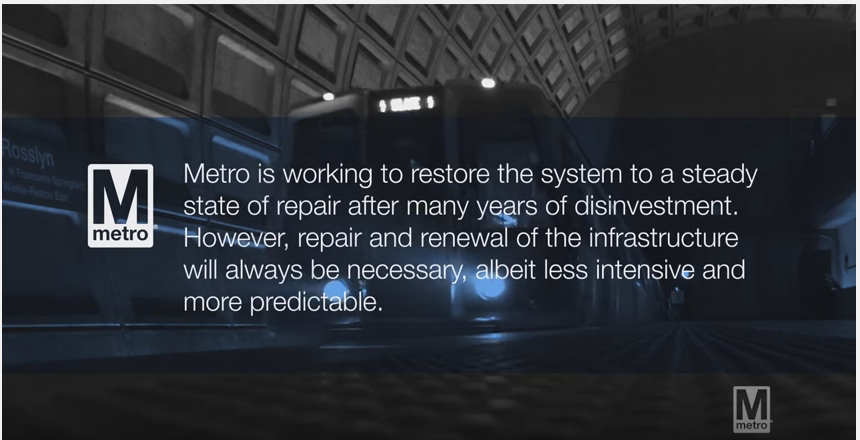
A poster in a station celebrating this 40th anniversary might be baffling. But isn’t that relatively tame poster better that nothing at all? A message to riders, a recognition of their place in this complicated history, rather than the legacy of silence we’ve all been so frustrated by? Metro, for the first time in a while, seems to be listening. (Alas, it has not yet responded to a request for comment on the optics of its anniversary swag or TV show.)
In a significantly more existential question posed to Metro Focus, one rider asks, “Why are you always doing track work? When will it end?” The response was honest—not in the foreseeable future: “Metro is working to restore the system to a steady state of repair after many years of disinvestment,” it said. “However, repair and renewal of the infrastructure will always be necessary, albeit less intensive and more predictable.”
The question gets at the heart of all our frustrations with Metro. But the mere fact that there is an answer, however indefinite, is a step forward. So maybe we shouldn’t criticize the agency too much for some posters and commemorative cards. It is its birthday, after all.

